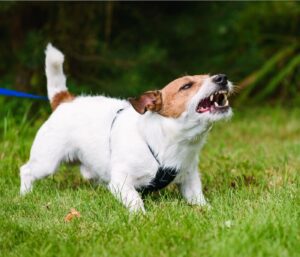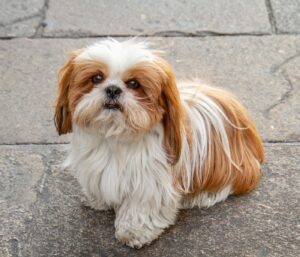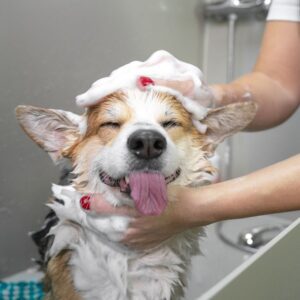Introduction
Do you have a corgi that seems to shed constantly? If so, you’re not alone. Many corgi owners deal with this problem on a daily basis. But there are some things you can do to help reduce the shedding and keep your home clean.
So, do corgis shed? The short answer is yes they do shed. The long answer is that all dogs shed, but some shed more than others.
In this blog post, we’ll discuss the shedding problem and how to best groom your corgi to reduce the amount of hair they lose.
We’ll also talk about some general tips for keeping your corgi healthy, which can also help with the shedding issue.
So if you’re ready to learn more about dealing with a shedding corgi, read on!
Do Corgis Shed?
The short answer is yes, corgis do shed. Every dog sheds to some degree, but some breeds lose more hair than others. Corgis fall into the latter category.
The long answer is that all dogs shed, but some shed more than others.
Corgis are double-coated dogs, meaning they have two layers of fur: a dense undercoat and a coarser outer coat. This type of coat helps protect them from cold weather and keeps them cool in the summertime.
The downside to having a double coat is that it sheds a lot.
Because corgis have two layers of fur, they blow their coats twice a year—once in the spring and once in the fall.
This means that for several weeks out of the year, you can expect your house to be covered in corgi fur. Luckily, there are ways to minimize the shedding (which we’ll get into later).
Why do Corgis Shed?
Corgis are double-coated dogs, meaning they have a dense outer coat of fur and a softer undercoat.
This type of coat helps protect them from the elements, but it also means they shed a lot. Their thick coats can make shedding seem like a never-ending battle for pet parents.
While it might be tempting to shave your corgi in an effort to reduce shedding, that’s actually not a good idea. Shaving can damage their coat and make them more susceptible to sunburn and other skin problems.
How much do Corgis Shed?
Corgis shed a moderate amount. They are not considered a hypoallergenic breed.
While all dogs shed, some breeds shed more than others. Corgis fall into the category of dogs that shed a moderate amount.
This means that you can expect to find hair on your clothing and furniture if you share your home with a corgi.
Corgis are not considered a hypoallergenic breed, which means that they are likely to cause allergic reactions in people who are sensitive to dog hair.
If you are considering adding a corgi to your family, be sure to spend time around the breed first to see if you have any adverse reaction to their shedding coat.
So why do Corgis Shed so much?
There are a few reasons:
- They’re seasonal shedders. Like many other dogs, corgis will shed more heavily in the spring and fall as they adjust to the changing seasons.
This is completely normal and nothing to be concerned about.
- They’re active shedders. Corgis are high energy dogs who love to play and run around. This activity level can cause them to shed more than less active breeds of dogs.
- They have double coats. As mentioned before, double coated dogs like corgis have two layers of fur – an outer layer and an inner layer (or undercoat).
The inner layer is where most of the shedding takes place; as this fur sheds, it gets trapped in the outer layer and then falls out when the dog shakes or rubs against something.
Are Corgis High Maintenance?
No, corgis are not high maintenance. They are a relatively low-maintenance breed, especially compared to other breeds of dogs.
They do not require extensive grooming or exercise, and they are generally healthy dogs with few health problems.
But, to reduce the shedding of a corgi, you need to take care of its coat.
The coat of a corgi needs proper brushing, bathing and extensive care as to reduce the Shedding of corgis.
How do I Stop my Corgi from Shedding?
There are a few things you can do to help reduce the amount your corgi sheds.
- First, you can brush your corgi regularly. This will help to remove loose hair and keep their coat healthy.
- You can also try using a special shampoo designed for dogs that shed a lot. This can help to reduce the amount of hair that is shed overall.
- Finally, make sure that your corgi is getting enough exercise. A tired dog is less likely to shed as much as one who is full of energy!
Grooming Your Corgi
Brushing
Brushing your corgi regularly is one of the best ways to reduce shedding.
A good brushing will remove loose hair and help distribute the natural oils in your corgi’s coat, which can actually reduce shedding overall.
There are a few different types of brushes that can be used on a corgi, but the most important thing is to choose one that is comfortable for both you and your dog.
Some people prefer to use a slicker brush, while others find a bristle brush to be more effective.
Whichever type of brush you choose, make sure to brush in the direction of the hair growth and be gentle so as not to damage your dog’s skin.
Bathing
Bathing your corgi on a regular basis can also help reduce shedding.
However, it’s important to use a gentle shampoo made specifically for dogs, as human shampoo can strip the natural oils from their skin and coat and actually increase shedding.
When bathing your corgi, make sure to avoid getting water in their ears and eyes, and rinse thoroughly to remove all traces of shampoo.
Other Grooming Tips
In addition to brushing and bathing, there are a few other grooming tips that can help keep your corgi from shedding all over the house:
- Trim their nails regularly to prevent overgrowth, which can lead to uncomfortable tearing and excessive shedding.
- Keep their ears clean and free of wax buildup, which can cause irritation and lead to excessive scratching (and Shedding).
- Give them regular baths with an anti-shedding shampoo or conditioner to help reduce loose hair.
Is there a Corgi that doesn’t shed?

Corgis are a shedding breed, but there are some that don’t shed as much as others.
The Pembroke Welsh Corgi is one of the breeds that sheds less than most. There are also hypoallergenic corgis, which are bred to be non-shedding.
These dogs are rare and usually have to be imported from other countries.
How to keep your Corgi Healthy?

A healthy diet is important for all dogs, but it’s especially important for corgis because of their high activity level.
Corgis need a diet that is high in protein and fat to help them maintain their energy level.
A good rule of thumb is to feed your corgi twice as much food as you would a sedentary dog.
Corgis also require a lot of exercise, so it’s important to make sure they’re getting enough exercise.
A daily walk or run is a great way to keep your corgi healthy and fit.
Regular vet checkups are also important in keeping your corgi healthy.
By staying on top of your corgi’s health, you can avoid many problems down the road.
20 Low-Shedding Dog Breeds

20 most low-shedding dog breeds are:
- Bichon Frise.
- Maltese.
- Chinese crested dog.
- Shih tizu
- Yorkshire terrier
- Havanese
- Basenji
- Irish Water Spaniel.
- Peruvian Inca Orchid.
- Poodle.
- Portuguese Water Dog.
- Schnauzer.
- Soft-Coated Wheaten Terrier.
- Spanish Water Dog.
- Scottish terrier
- Barbet.
- Afghan hound
- Coton de tulear
- Kerry blue terrier
- Brussels griffon
Final Thoughts?
Yes, corgis do shed. They are not considered a hypoallergenic breed and will shed a moderate amount.
While they are high maintenance compared to some other breeds, their loyalty and affection make them worth the effort. If you’re a Corgi owner, you know that shedding is a big problem.
But there are things you can do to help reduce the amount of fur your Corgi sheds around the house.
Regular brushing and bathing, as well as keeping your Corgi healthy with a good diet and exercise, can make a big difference.
So don’t despair – with a little effort, you can keep your Corgis shedding under control!




